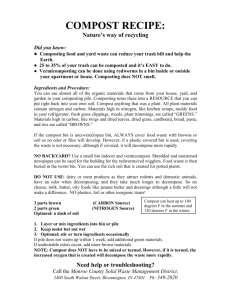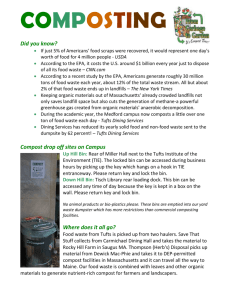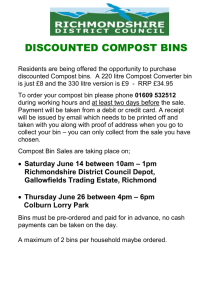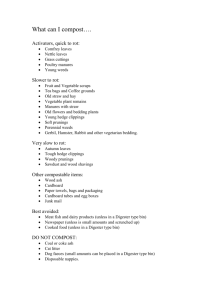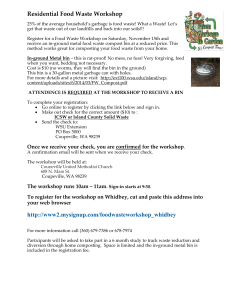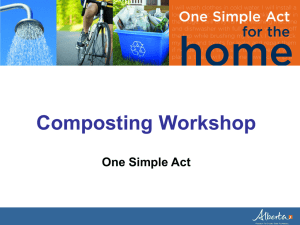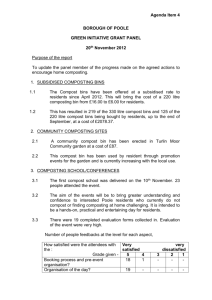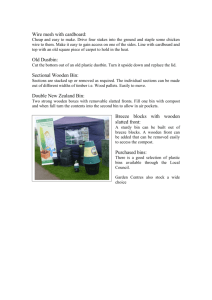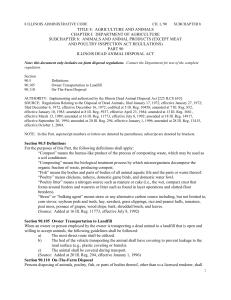Home composting guide
advertisement
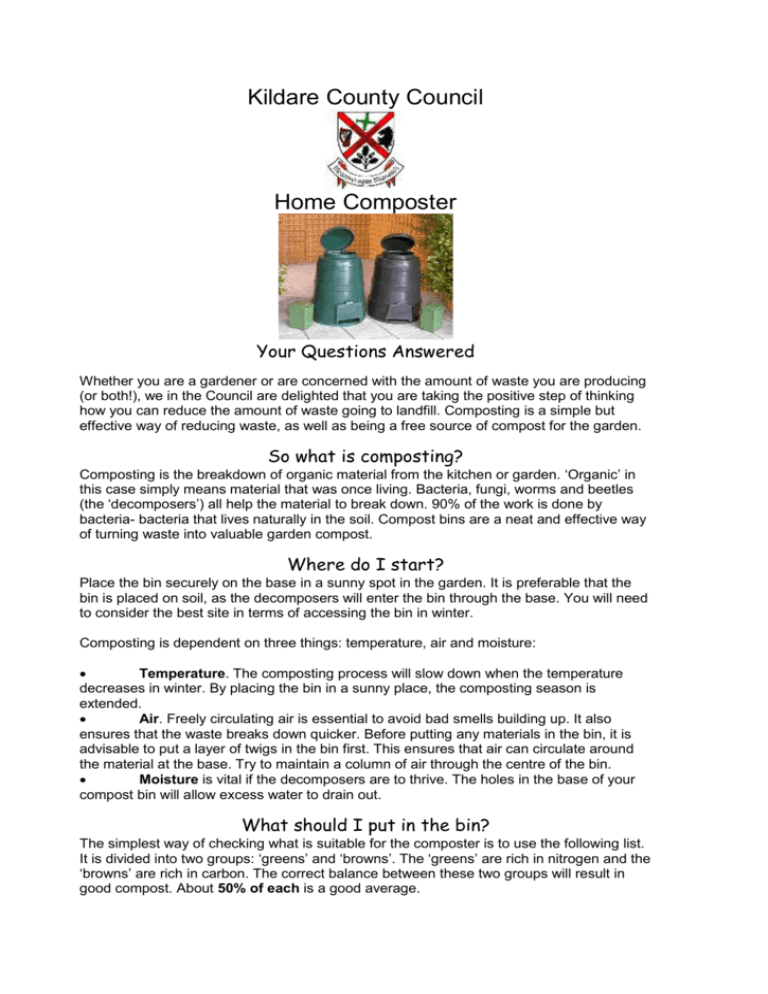
Kildare County Council Home Composter Your Questions Answered Whether you are a gardener or are concerned with the amount of waste you are producing (or both!), we in the Council are delighted that you are taking the positive step of thinking how you can reduce the amount of waste going to landfill. Composting is a simple but effective way of reducing waste, as well as being a free source of compost for the garden. So what is composting? Composting is the breakdown of organic material from the kitchen or garden. ‘Organic’ in this case simply means material that was once living. Bacteria, fungi, worms and beetles (the ‘decomposers’) all help the material to break down. 90% of the work is done by bacteria- bacteria that lives naturally in the soil. Compost bins are a neat and effective way of turning waste into valuable garden compost. Where do I start? Place the bin securely on the base in a sunny spot in the garden. It is preferable that the bin is placed on soil, as the decomposers will enter the bin through the base. You will need to consider the best site in terms of accessing the bin in winter. Composting is dependent on three things: temperature, air and moisture: Temperature. The composting process will slow down when the temperature decreases in winter. By placing the bin in a sunny place, the composting season is extended. Air. Freely circulating air is essential to avoid bad smells building up. It also ensures that the waste breaks down quicker. Before putting any materials in the bin, it is advisable to put a layer of twigs in the bin first. This ensures that air can circulate around the material at the base. Try to maintain a column of air through the centre of the bin. Moisture is vital if the decomposers are to thrive. The holes in the base of your compost bin will allow excess water to drain out. What should I put in the bin? The simplest way of checking what is suitable for the composter is to use the following list. It is divided into two groups: ‘greens’ and ‘browns’. The ‘greens’ are rich in nitrogen and the ‘browns’ are rich in carbon. The correct balance between these two groups will result in good compost. About 50% of each is a good average. Greens Tea leaves, teabags and coffee grounds Fruit and vegetable peels Grass cuttings (not too much!) Dried flowers Old plants (disease-free) Egg shells Browns Cardboard (e.g. egg box, kitchen roll tube) Newspaper (no glossy paper) Wood ash (no coal or peat ash) Light hedge clippings Sawdust or wood shavings Kitchen paper What should I NOT put in the bin? Some materials, in spite of being capable of being composted, are not suitable for home composting. If you are in any doubt, leave it out! Type Meat and fish Oil and grease Cooked food Evergreen shrubs Cat or dog waste Plastic, metal, glass Corn on the cob, timber Reason Attracts pests Attracts pests Attracts pests Too acidic Risk of pathogens (diseased cells) Will not break down Too slow to break down Try to ensure that the materials are as mixed as possible. Too much of any one type of material will slow down the process. Paper and cardboard may need to be soaked (use a watering can). Cut up the materials so they are as small as possible. Pests Pests are only a problem if the bin is not managed correctly. Fruit flies are the most common pest- although they don’t actually cause any harm. To avoid this problem, simply cover the top of the contents with a circle of carpet or similar material. Rodents are attracted to cooked food and meat and dairy products. Avoid placing any of these items in the bin. What do I do with the compost? Firstly, you should recognise when the compost is ready. It should be brown and crumbly, with a sweet, earthy smell. Compost is a soil conditioner- not a fertiliser. Use it to improve soil structure by digging it into heavy soils to improve drainage or sandy soils to retain moisture. Alternatively, it can be used as a mulch- simply spread it around plants to inhibit weed growth and retain moisture. Still have questions? If so, contact the Environment Section, Kildare County Council, Arás Chill Dara, Naas, Co. Kildare, tel.: 045 980588, fax: 045 980587, email: environ@kildarecoco.ie, web: www.kildare.ie.
